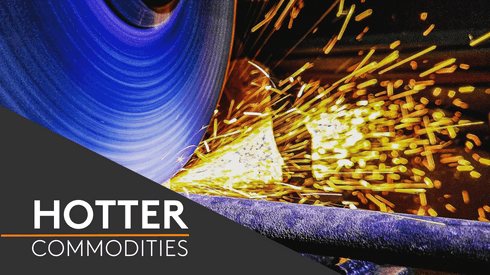The strategy includes a commitment to work with the recently reconstituted Steel Council to consider the implications of a recommendation from the Climate Change Committee and to set targets for ore-based steelmaking to reach near-zero carbon emissions by 2035.
The strategy was announced by UK business & energy secretary Kwasi Kwarteng on Wednesday March 17, and is intended to create the world’s first low-carbon industrial sector by creating new ‘green’ jobs and by slashing emissions by two-thirds within just 15 years.
It is hoped that the package of measures will put the UK at the forefront of the global green industrial revolution by creating and supporting as many as 80,000 jobs over the next three decades. The latest move builds on a 10-point plan outlined in 2020 for a Green Industrial Revolution.
The new strategy will help existing industry to decarbonize and will encourage the growth of new, low-carbon industries in the UK to protect and create skilled jobs and businesses, the government said.
It will also give businesses long-term certainty about investing in home-grown decarbonization technology, such as the capture and storage of carbon emissions from industrial plants, rather than outsourcing industrial activity to high-emissions countries elsewhere.
Around £171 million from the Industrial Decarbonization Strategy has been allocated to nine green technology projects in Scotland, South Wales and the north of England, to undertake engineering and design studies for the rollout of decarbonization infrastructure, such as carbon capture, usage and storage (CCUS) and the use of hydrogen as a fuel.
Tata Steel is a partner in the South Wales Industrial Cluster (SWIC) and has been granted phase-two funding of almost £20 million following successful completion of phase-one assessments looking at decarbonization schemes and the infrastructure required for a hydrogen-based economy in South Wales.
Phase two involves engineering studies to explore the routes to decarbonization, including the use and production of a hydrogen supply, CCUS and CO2 shipping from South Wales, which would be a first for the UK.
Tata Steel will work with its partners in SWIC to identify how to access the necessary external infrastructure for decarbonization, such as CO2 transport and storage, low-carbon electricity, and hydrogen to create the world’s first net-zero emissions industrial zone.
As well as contributing to the UK’s carbon-reduction commitment, the project will enhance the UK’s ability to locally manufacture low- or net-zero-carbon cement and steel products, helping to drive the low-carbon future of UK construction and other sectors.
Tata Steel said that its scheme was aligned with the government’s 10-point plan and will include engineering studies into:
- The production and distribution of hydrogen from both renewable energy and imported liquefied natural gas (LNG) to be distributed by repurposing the existing gas network
- Cleaner electricity production using carbon capture and/or hydrogen-rich natural gas
- Industrial carbon capture, usage and storage technologies along the South Wales coast as well as the transportation and shipping of CO2
- Large industry decarbonization through fuel switching (the substituting of one energy source by a greener, cleaner alternative), process efficiencies and the production of cleaner transportation fuels.
British Steel said in a post on social media that the strategy was great news for the Humber region in northeast England following an announcement by Zero Carbon Humber (in which British Steel is a partner) of the successful bid for £75 million of funding toward its goal of becoming the world’s first net-zero industrial cluster.
Other key commitments in the government’s strategy include:
- Using carbon pricing as a tool to get industry to take account of emissions in business and investment decisions
- Establishing a policy framework to ensure uptake of fuel switching in industry, from fossil fuels to low-carbon alternatives such as hydrogen, electricity and biomass
- Establishing a targeted approach to mitigate against carbon leakage that meets the government’s domestic and global climate goals, while keeping businesses competitive
- Developing proposals for new product standards, enabling manufacturers to clearly distinguish their products from high-carbon competitors
- Exploring the role of co-ordinated action on public procurement to create demand for green industrial products, helping to drive down costs and allowing a broader market to develop
- Ensuring that the land-planning regime is fit for the building of low-carbon infrastructure
- Supporting skills transition so that the current and future workforce will benefit from the creation of new green jobs
- An expectation that at least 3 megatonnes per year of CO2 will be captured within industry by 2030, compared with the minimal levels at present.






